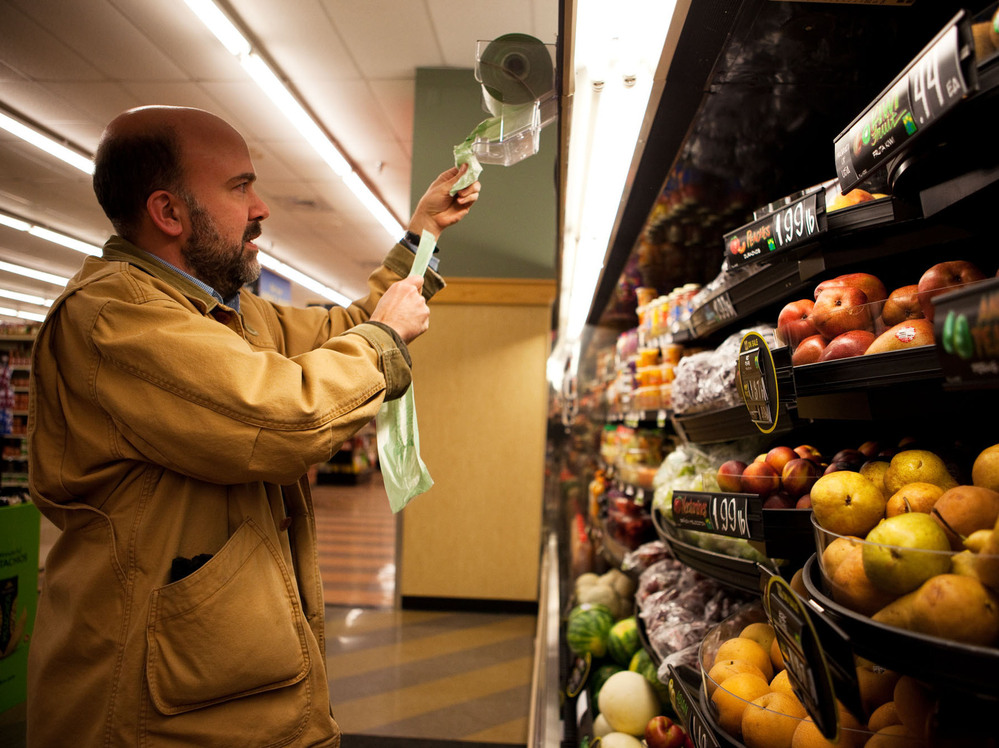 Enlarge image i
Enlarge image i Missy Ruminski prepares The Peasantry's entry. Note that poutine is not only a delicious snack but also a source of light and warmth in the universe.
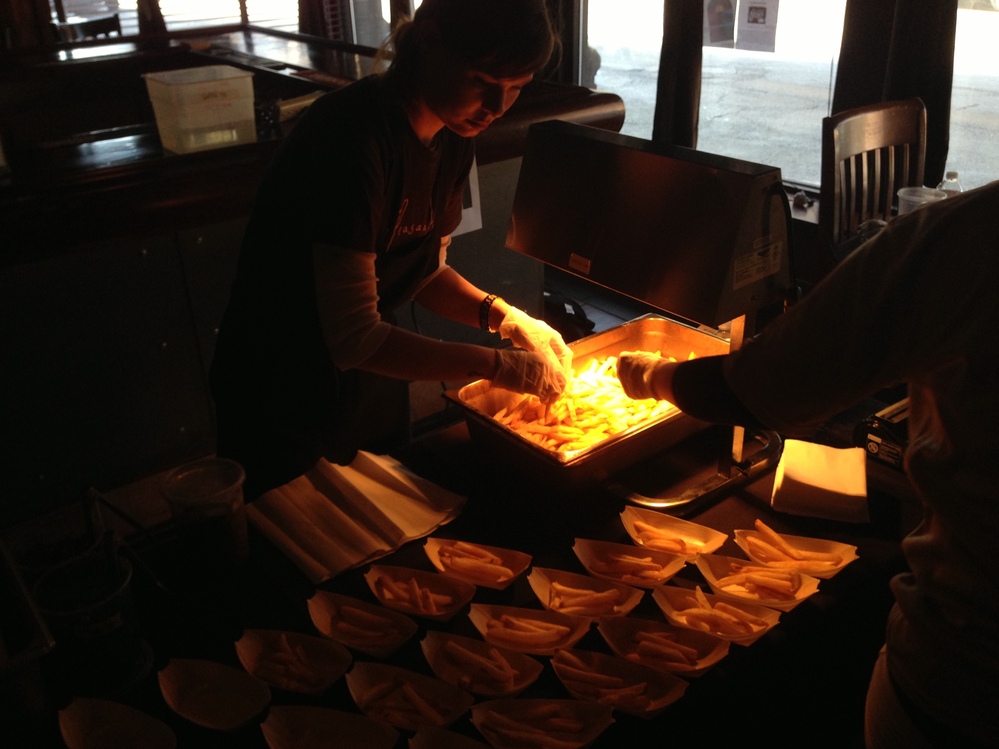
Missy Ruminski prepares The Peasantry's entry. Note that poutine is not only a delicious snack but also a source of light and warmth in the universe.
There is no greater mystery in America than this: Why is poutine not available everywhere?
French fries with cheese curds, covered in gravy there's nothing more American than this Canadian dish that's not actually American. And while you can find it stateside more easily than you used to, poutine should be in every restaurant in the country, and probably somewhere on our flag.
For one day in Chicago, at least, poutine gets its due, at the Poutine Fest. There's no particular poutine connection to Chicago, except that we like things that are perfect.
The creators call the festival "the first of many love letters exchanged between a tipsy, slurring Chicago and picturesque French Canada." It's also 11 restaurants battling for poutine supremacy, and for a trophy with a gravy boat on top.
 Enlarge image i
Enlarge image i The "King of Poutine" trophy
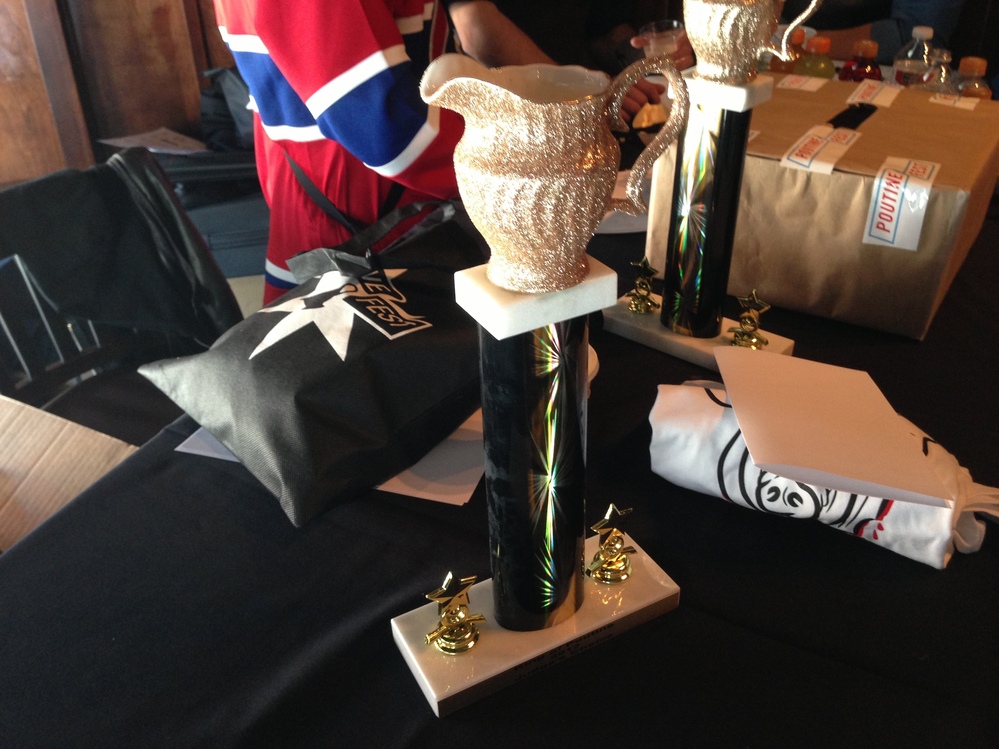
The "King of Poutine" trophy
When I walk into the back room of Haymarket Pub & Brewery, where the festival was held last Sunday, the first thing I notice is there are lots of beards, and the air itself has been deep fried.
I meet up with my friend Dan Pashman, who hosts the Sporkful podcast and who you hear sometimes on Weekend Edition Sunday. He believes poutine would be better if it were served with the gravy on the side, so you could mete out perfect bites and avoid sogginess. I tell him you could also ask for a bunch of cans of paint instead of Starry Night, but I'll trust Van Gogh on it.
 Enlarge image i
Enlarge image i A poutine from El Ideas, which tastes way better than it photographs.
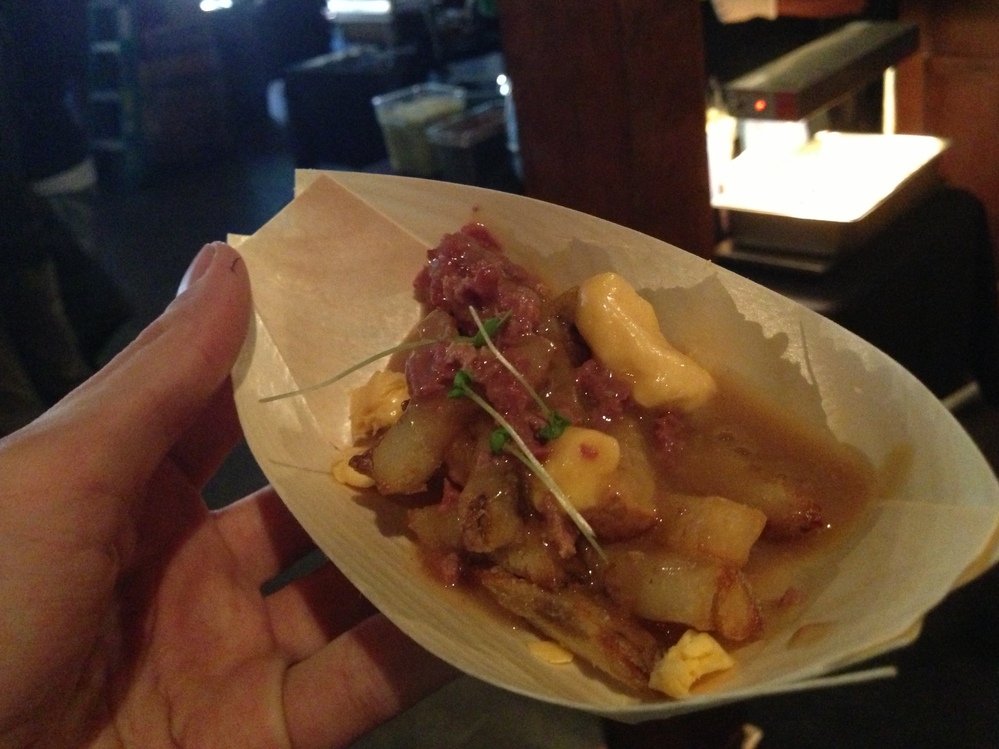
A poutine from El Ideas, which tastes way better than it photographs.
The Publican is one of my favorite Chicago restaurants, so I'm happy to see they've got a station. But they're having some "electrical issues," and aren't serving yet. Two tiny pieces of chicken sit, rather sadly, in a lukewarm deep fryer.
I start with a very fancy poutine from El Ideas. It's got duck sausage and foie gras. And those little green things on top are just there as a reminder there are people who've made healthier choices than you, and they're probably deeply unhappy.
But is the foie gras overkill?
"It's cheating," says El Ideas chef Phillip Foss.
It's delicious, but I think it's a little over-the-top for a dish most likely to be eaten drunkenly at four in the morning. Foss isn't so sure.
 Enlarge image i
Enlarge image i Art Jackson of Pleasant House Bakery prepares his take, which uses skirt steak, and chunky British chips in the place of fries.

Art Jackson of Pleasant House Bakery prepares his take, which uses skirt steak, and chunky British chips in the place of fries.
"Depends on what you're drinking."
Poutine just seems like one of those things that isn't invented so much as discovered. These things are just meant to be together, like coffee and cream, or The Beatles.
I try the Haymarket's take: smoked ham hock, Andouille sausage, and lemon-soaked apples. I ask the young woman preparing it if she thinks poutine is the next big food trend. Could it replace the cupcake? Could it replace bacon? She laughs, as if to say bacon is not going anywhere. Bacon is forever, like a diamond.
 Enlarge image i
Enlarge image i Little Market's poutine served in its traditional dish, a seven-passenger boat.
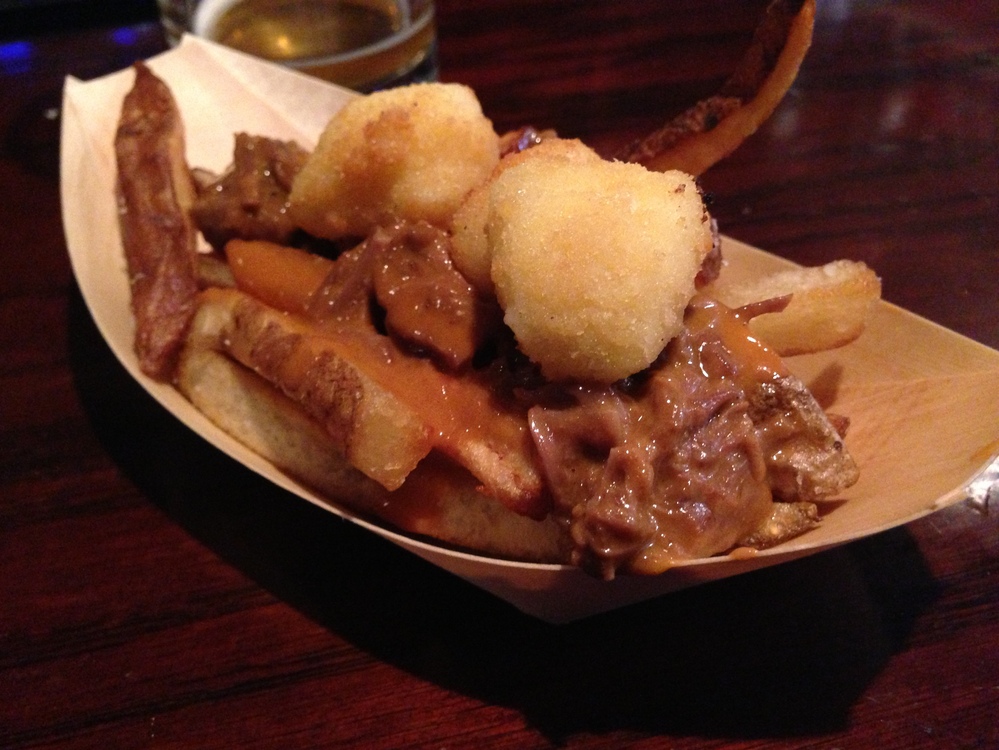
Little Market's poutine served in its traditional dish, a seven-passenger boat.
I take another pass by the Publican's station. No luck.
If I made a list of the reasons the Midwest is objectively superior to the rest of the world, the ready availability of deep-fried cheese curds would be right at the top. So when I see that Little Market is deep-frying their curds before putting them in their poutine, I head right over.
It's a formidable poutine: In addition to the fried curds, it's got red wine-braised short ribs.

The more poutine you eat, the more useful the iPhone's panorama function becomes.
Says chef Ryan Poli, "We call it Vladimir Poutine."
Four or five poutine boats in, I start to wish I'd been pacing myself. I'm slowing down. I head over to try Red Door's entry it's got duck confit, chorizo verde, and pickled jalapeno. Their poutine is right between Mexico and Canada, just like us.
 Enlarge image i
Enlarge image i When zooming in on his iPhone to see if this picture was in focus, the photographer left two pretty gross chicken grease streaks on the screen.
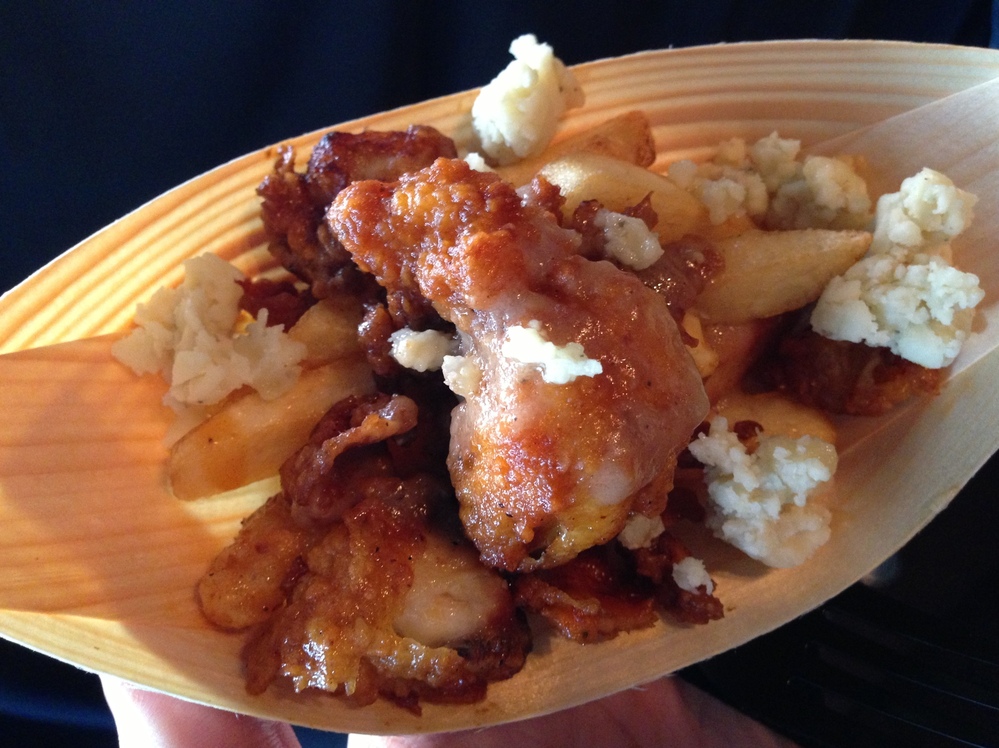
When zooming in on his iPhone to see if this picture was in focus, the photographer left two pretty gross chicken grease streaks on the screen.
I'm done. Completely full. I could not eat another bite. These are the lies I'm telling myself when Ryan from Little Market yells out, "The Publican has poutine! Form a line!" Love of poutine, you see, is bigger than competition.
The Publican's take has fried chicken tail and blue cheese. It is worth the wait. I'm too full to try the entry that would eventually win, a wild boar and pickled red onion concoction from The Gage. It'll be days until I'm again hungry enough to be disappointed about missing it, but that day will come.
Ian Chillag is a producer/humorist with Wait Wait ... Don't Tell Me!
The Columbus Dispatch Central Ohio News, Sports, Arts & Classifieds Life & Entertainment. Food. Reports on death of cupcakes seem like exaggeration after looking at local bakeries. Community. The Good Life: Volunteer shares love story ... TicketsInventory Tickets : Buy Tickets for Concerts, Sports ... Country Megaticket Country Megaticket is the hottest country music festival including Jason Aldean, Brad Paisley, Lady Antebellum, Rascal Flatts, Toby Keith, Miranda ... DarkeJournal.com Darke County community information, news, announcements and conversation. Topic Galleries -- chicagotribune.com Topic galleries provide easy access to stories and photos about people, places, organizations, events and subjects of interest to you. They bring together rich ... St. Louis Post-Dispatch Macleans.ca - Canada News, World News, Politics, Business, Culture ... Canada's only national weekly current affairs magazine. ... News articles and headlines from the Chicago Sun-Times Daily Chicago newspaper offering news from local community news to international, sports, weather, and more. News - Events, Festivals, Concert Reviews, Shows - Page 1 Billboard The online extension of Billboard magazine, Billboard.biz is the essential online destination for the music business. Learn more
![Horsemeat Scandal [Infographic]](http://www.foodsafety.com.au/wp-content/uploads/2013/02/infographic-horsemeat.jpg)
 Enlarge image i
Enlarge image i 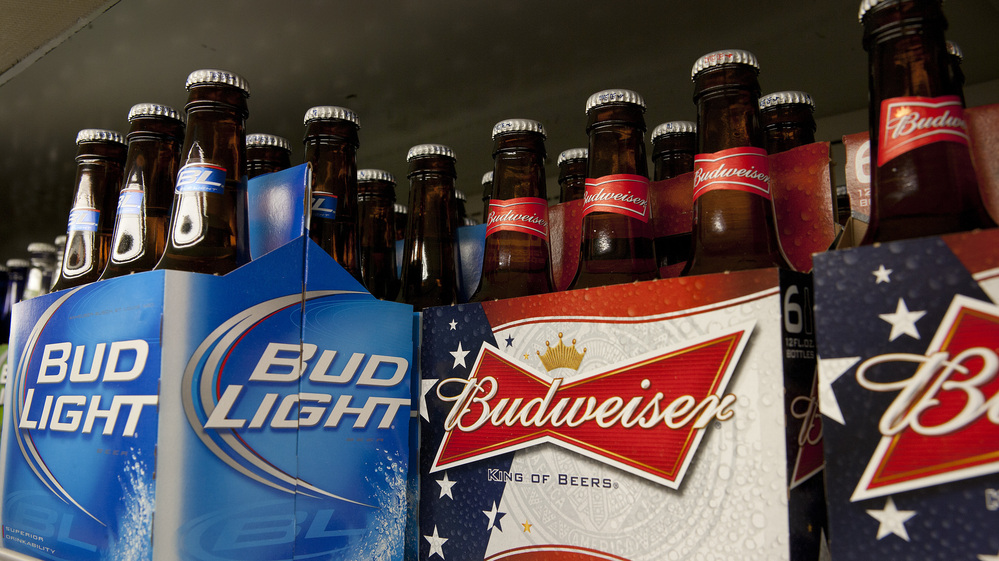
 Enlarge image i
Enlarge image i 
 Enlarge image i
Enlarge image i 

 Enlarge image i
Enlarge image i 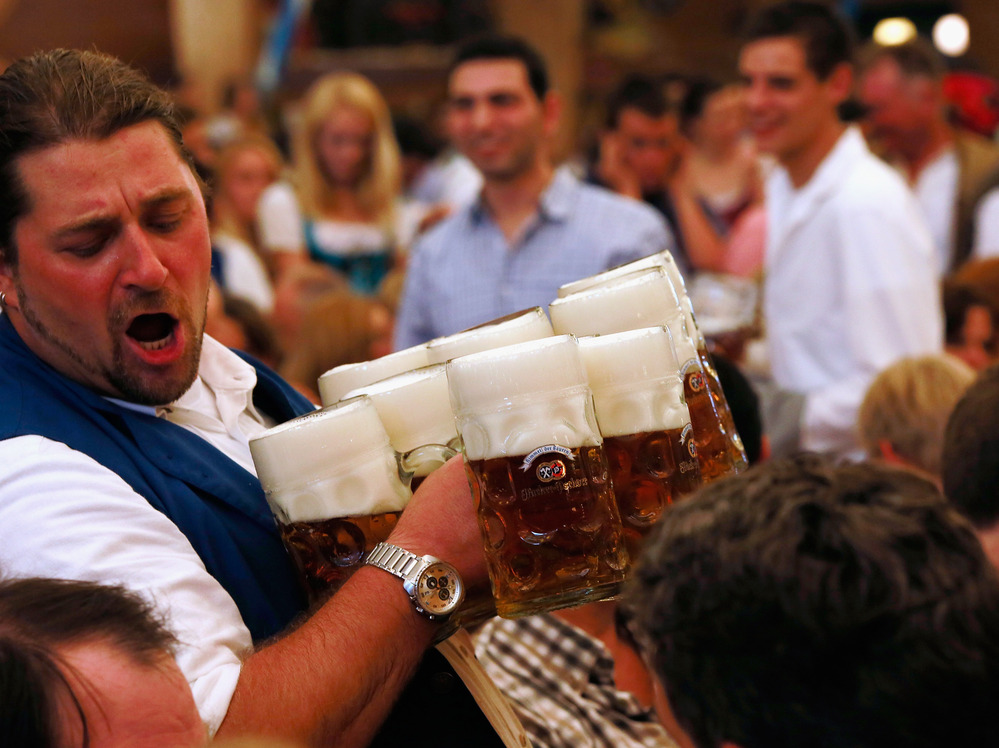
 Enlarge image i
Enlarge image i 
 Enlarge image i
Enlarge image i 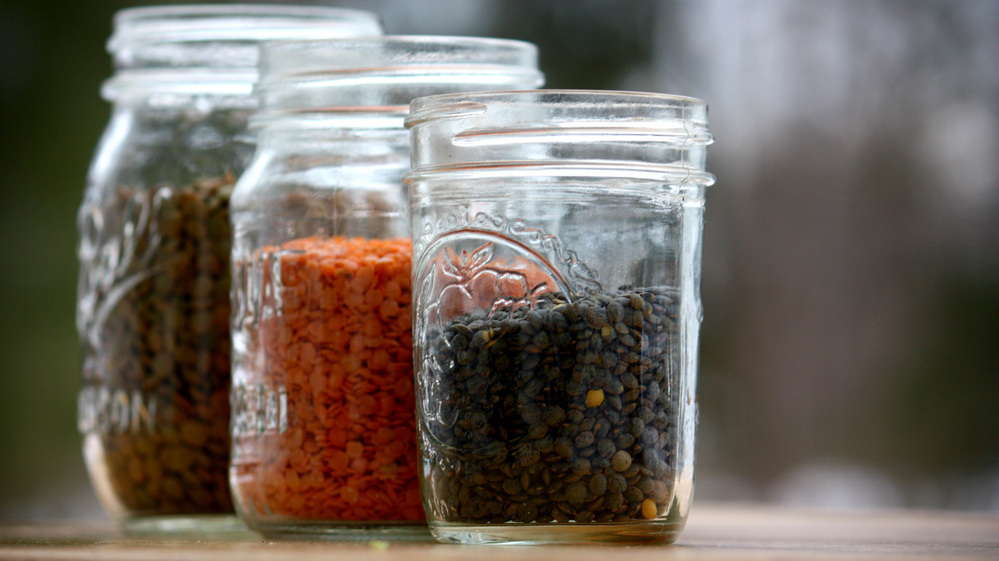
 Enlarge image i
Enlarge image i 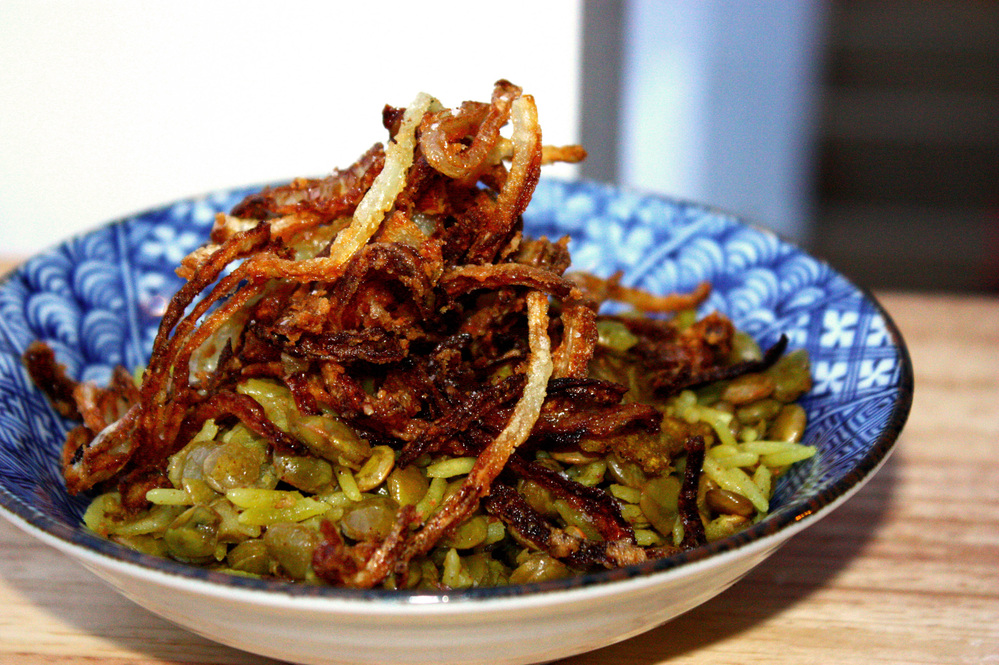
 Enlarge image i
Enlarge image i 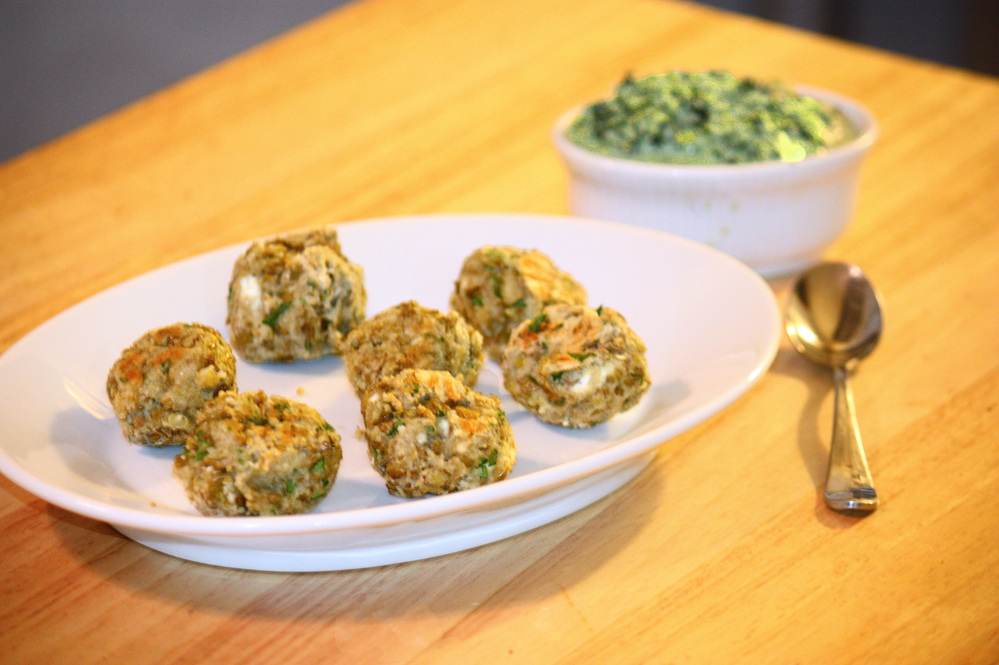













 Enlarge image i
Enlarge image i 